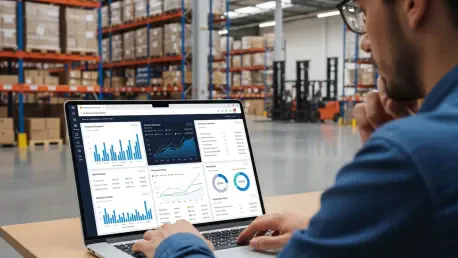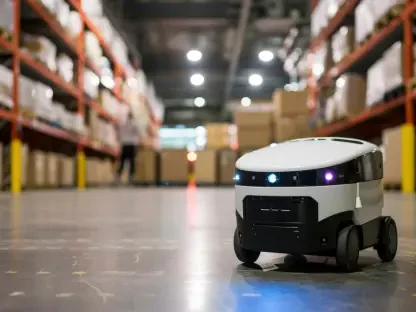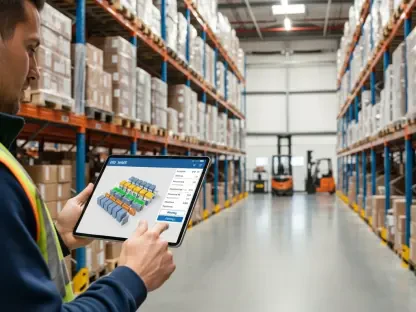Understanding the Current Landscape of Peak Season Logistics
The logistics industry faces unparalleled pressure during peak seasons, such as the holiday shopping rush, when consumer demand for rapid delivery and seamless experiences skyrockets, pushing traditional operational models to their limits. E-commerce has amplified these expectations, with millions of orders flooding supply chains, often overwhelming systems that struggle to keep pace. Retailers must navigate a complex web of challenges, from ensuring timely deliveries to managing customer inquiries, all while maintaining cost efficiency in a highly competitive market.
A critical aspect of this landscape is post-purchase logistics, which plays a pivotal role in shaping consumer perceptions through speed, transparency, and reliability. Last-mile delivery, returns management, and customer service emerge as key segments where performance directly impacts brand loyalty. Missed delivery windows or unclear tracking information can lead to dissatisfaction, pushing customers toward competitors who prioritize these elements.
Technological advancements have reshaped the industry, with major market players investing heavily in digital solutions to stay ahead. The rise of e-commerce continues to drive innovation, as online shopping becomes the norm for holiday purchases. This shift underscores the need for robust systems that can handle surges in volume while meeting heightened expectations, setting the stage for transformative tools to redefine operational success.
The Role of AI in Revolutionizing Logistics Operations
Key Trends and Innovations Driving AI Adoption
Artificial Intelligence (AI) and Generative AI (GenAI) are rapidly emerging as game-changers in logistics, particularly through Post-Purchase Delivery Experience (PPDE) tools designed to enhance customer interactions. These technologies address the growing consumer demand for real-time tracking and personalized engagement, especially during peak demand periods when delays or miscommunication can erode trust. Retailers are increasingly turning to AI to bridge these gaps with innovative solutions.
Machine learning algorithms now predict delivery windows with remarkable accuracy, while AI-powered chatbots handle a flood of customer inquiries with speed and precision. These advancements reduce the strain on human resources and improve response times for complex issues. Additionally, market drivers like labor shortages and the push for operational efficiency are accelerating the adoption of such tools across the sector.
Emerging technologies also enable proactive communication, such as automated notifications about delays or alternative pickup options, ensuring customers remain informed. This shift toward automation reflects a broader trend of leveraging AI to not only solve logistical bottlenecks but also to create a more engaging and responsive post-purchase journey, aligning with modern expectations.
Market Insights and Growth Projections
Data from recent surveys, including insights from Gartner, highlight that enhancing customer experience remains a top priority for logistics leaders over the next several years. This focus surpasses even digitalization goals, with a clear emphasis on service expansion to retain consumer trust. The adoption of AI in logistics is on a steep upward trajectory, driven by its potential to streamline operations during high-stress periods.
Growth forecasts indicate that AI-driven solutions will significantly reduce operational costs while boosting customer satisfaction metrics in the coming years, with projections showing substantial market expansion from now through 2027. These tools are expected to cut down expenses related to customer service inquiries and returns processing, offering a dual benefit of efficiency and improved user sentiment.
Looking ahead, AI is poised to create competitive advantages for retailers who integrate it strategically during peak seasons. The ability to offer transparency through real-time updates and tailored interactions will likely distinguish leaders in the market. This forward-looking perspective suggests that early adopters stand to gain the most as the technology matures and becomes integral to logistics frameworks.
Addressing Challenges in Peak Season Logistics with AI
Peak season logistics often grapples with overwhelming challenges, including a surge in “Where Is My Order?” (WISMO) inquiries, spikes in returns, and persistent labor constraints. These issues strain resources and risk damaging customer relationships if not managed effectively. The sheer volume of interactions during holiday periods can cripple traditional support systems, necessitating smarter approaches.
AI offers a compelling solution by automating responses to routine inquiries with real-time updates, deflecting low-value calls from overburdened staff. It also streamlines returns by generating instant labels or suggesting convenient drop-off locations, reducing friction for consumers. Such automation allows human agents to focus on nuanced escalations, ensuring a balanced operational flow even under pressure.
However, limitations exist, such as potential customer resistance to automated systems during emotionally charged shopping periods and the risk of inaccurate AI responses tarnishing brand reputation. To counter these hurdles, hybrid models that combine AI efficiency with accessible human support are recommended. This approach ensures flexibility, allowing retailers to adapt based on consumer feedback and specific seasonal needs.
Navigating Data Privacy and Compliance in AI Implementation
As AI becomes central to logistics, the regulatory landscape surrounding data privacy presents a significant consideration, particularly with the use of large language models that handle vast amounts of personal information. During peak seasons, when customer interactions peak, safeguarding data is paramount to maintaining trust. Retailers must navigate a complex web of compliance requirements to avoid legal pitfalls.
Adhering to consumer protection laws is non-negotiable, as breaches or misuse of data can lead to severe reputational damage. Transparency in AI-driven communications, such as clearly disclosing automated interactions, becomes essential to align with regulatory expectations. These practices not only ensure legal compliance but also reinforce customer confidence in a brand’s commitment to ethical standards.
Balancing personalization with privacy remains a delicate task, as overly intrusive AI tools risk alienating users despite their intent to enhance engagement. Retailers must prioritize secure systems and clear policies to protect sensitive information while still delivering tailored experiences. This equilibrium is crucial for sustaining long-term relationships and preserving brand integrity in a data-conscious market.
The Future of AI in Peak Season Logistics
Advancements in predictive analytics and personalized marketing are set to further elevate AI’s role in logistics, offering retailers deeper insights into consumer behavior during high-demand periods. These tools will likely enable more accurate demand forecasting, optimizing inventory and delivery schedules to prevent bottlenecks. The potential for AI to anticipate issues before they arise could redefine operational resilience.
Emerging disruptors, such as novel AI technologies or unexpected shifts in consumer preferences, may reshape the landscape, challenging retailers to remain agile. Integrating logistics with revenue opportunities, like embedding upsells in delivery notifications, represents a promising growth area. This convergence of transactional updates and marketing could unlock significant value if executed with precision.
Global economic conditions, ongoing innovation, and evolving regulatory frameworks will also influence AI adoption in the sector. Retailers must stay attuned to these external factors to align their strategies with broader trends. The ability to adapt to such dynamics while leveraging AI’s capabilities will determine which players thrive in future peak seasons, maintaining relevance in a fast-evolving industry.
Conclusion and Strategic Recommendations
Reflecting on the insights gathered, it becomes evident that AI holds transformative power for peak season logistics, driving efficiency and elevating customer experiences to new heights. The technology proves instrumental in tackling persistent challenges, from managing inquiry surges to streamlining returns, while opening doors to personalized engagement.
Looking ahead, retailers are encouraged to initiate small-scale AI pilots, testing tools like chatbots for tracking updates, and to scale these efforts with holiday-specific features such as festive messaging or delivery cutoff alerts. A balanced approach, blending automation with human oversight, emerges as a critical strategy to ensure accuracy and maintain consumer trust over time.
Furthermore, prioritizing data privacy and compliance stands out as a non-negotiable step to safeguard brand reputation during implementation. By strategically integrating AI, businesses position themselves to turn last-mile challenges into lasting competitive edges, paving the way for sustained success in future high-demand periods.









